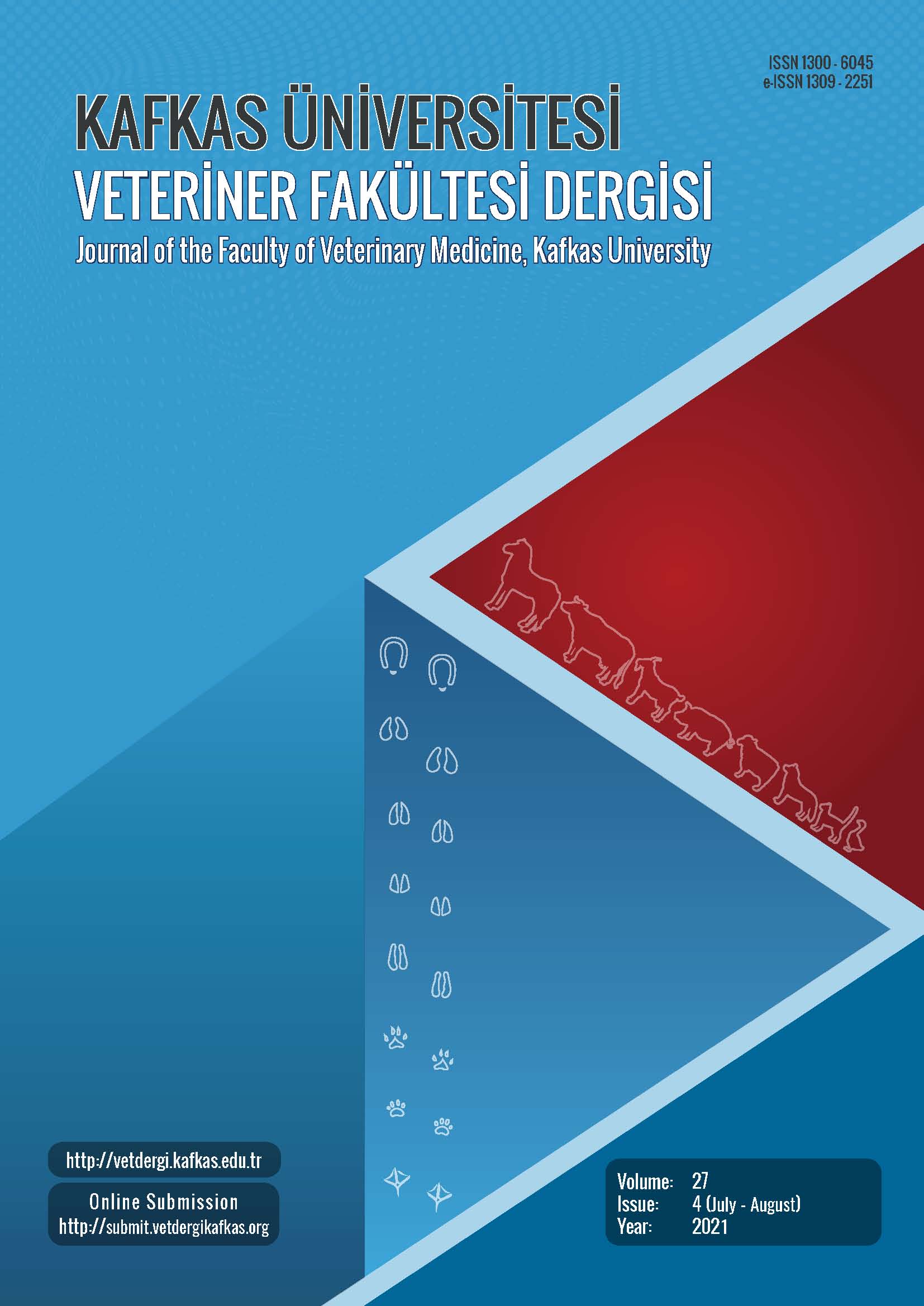
This journal is licensed under a Creative Commons Attribution-NonCommercial 4.0 International License
Kafkas Üniversitesi Veteriner Fakültesi Dergisi
2021 , Vol 27 , Issue 4
Evaluation of the Analytical Efficiency of Real-Time PCR in the Diagnosis of Brucellosis in Cattle and Sheep
1Veterinary Control Central Research Institute, Breeding Disease Laboratory, TR-06100 Ankara - TURKEY2Kafkas University, Faculty of Health Science, Department of Midwifery, TR-36300 Kars - TURKEY DOI : 10.9775/kvfd.2021.25776 Brucellosis is an important infectious disease that aff ects animal and public health in many developing countries, including Turkey. The control and eradication of brucellosis are contingent upon methods that provide a fast and reliable diagnosis. In this context, molecular methods which enable the enzymatic amplification of bacterial conserved gene regions are advantageous. In this study, samples of cattle and sheep blood serum sent to our laboratory from enterprises at risk of brucellosis in diff erent settlements of the Central Anatolia and the Black Sea Regions of Turkey were analyzed. In our study, we aimed to investigate brucellosis using serological methods and Real-Time PCR (RT-PCR), and to analyze these methods comparatively. To this end, RBPT, SAT and CFT tests, as well as the Brucella RT-PCR, which enables the amplification of the BCSP31 gene found in all Brucella species, were used. In the 368 serum samples analyzed, Brucella positivity was determined as 11.41%, 10.05% and 9.8% by RBPT, SAT and CFT, respectively, while the RT-PCR gave the same rate of positivity (9.8%) as CFT. When CFT is taken as a reference test, the sensitivity, specificity, positive and negative predictive value and diagnostic accuracy of the RTPCR were determined as 100%; and it was found to be perfectly compatible with CFT, with a kappa value of 1.000. The number of bacterial genomes that could be detected by the RT-PCR in the presence of DNA of the Brucella melitensis biotype 3 (Ether) reference strain was determined as 3.94x103 copies. Linear regression analysis revealed that the amplification efficiency (92.71%) of the RT-PCR was within the desired limits (90-110%) and that the RT-PCR was repeatable (CV 2.9%) and reproducible (CV 1.8%). This study indicates that the RT-PCR is a useful method for application in the diagnosis of bovine and sheep brucellosis thanks to its high analytical efficiency; it also emphasizes the importance of blood serum samples as preferable clinical materials in this context. Keywords : Brucella spp., Brucellosis, Cattle, Sheep, Real-Time PCR, Analytical competence










